The American freight rail network is operated by a few, but powerful, carriers. The U.S. has some 140,000 miles of track, the most expansive of any other country in the world, which is owned and operated across four companies referred to as Class I railroads.
By definition, Class I railroads exceed an operating revenue of $490 million (adjusted for inflation annually).
BNSF
BNSF Railway is the largest freight railroad in the U.S. by both revenue and coverage. It lays claim to over 32,500 miles of track across 28 states. The Class I giant is best known as a top transporter of intermodal freight as well as bulk cargo, like coal and grain.
BNSF originates from Burlington Northern and Santa Fe Railway, the byproduct namesake of a merger between two railroads in 1995. However, BNSF is not actually an acronym for the railroad’s official title. The railroad’s formal name is BNSF Railway.
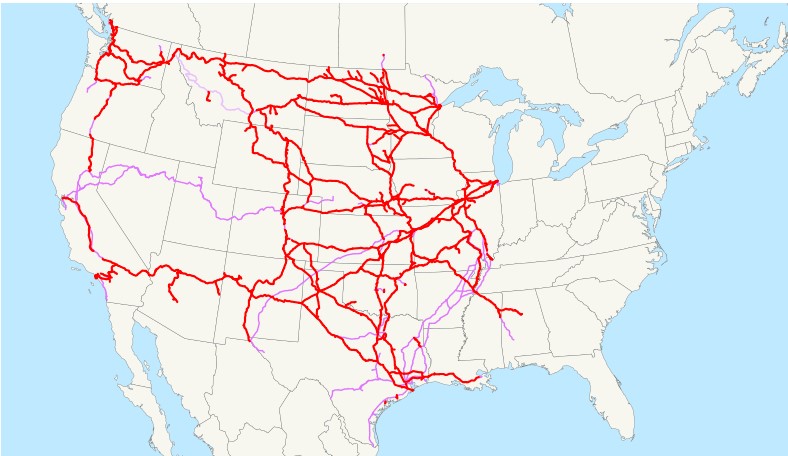
As the map shows, the railroad’s network is largely west of the Mississippi River and runs through major cities in the Midwest, Southwest, and West Coast regions of the country. Its link from well-trafficked West Coast seaports, like Seattle, Los Angeles, and Long Beach, to prominent inland ramps, like Dallas, Denver, and Kansas City, afford the railroad’s capability of serving U.S. intermodal shippers.
CSX
CSX is another U.S. Class I railroad which operates around 21,000 miles of track. The railway’s network spans the eastern U.S., while also protruding into parts of Canada where it connects with Montreal, Quebec and London, Ontario.
CSX is a direct competitor to fellow Class I Norfolk Southern as the two share a duopoly on freight rail coverage in the eastern half of the country.
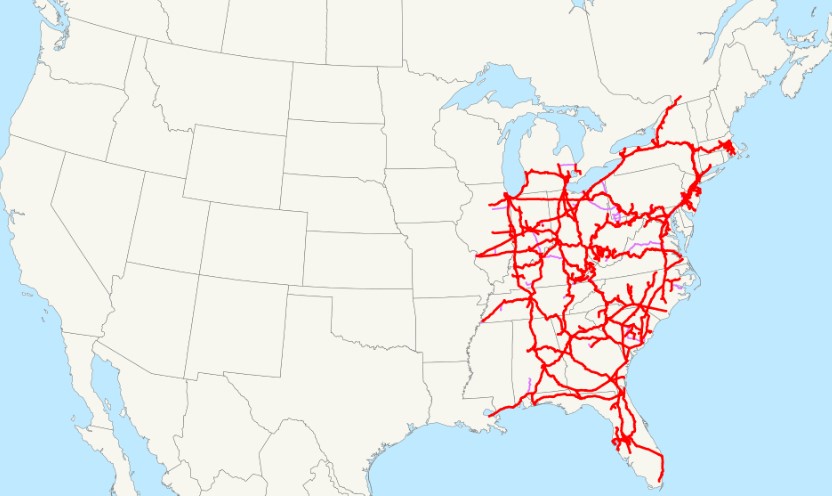
As the map shows, CSX’s network provides coverage to all major markets in the eastern block of the U.S. as well as hubs in Detroit and Chicago.
Like BNSF, CSX’s name is based off the origins of a past merger of two railroads in 1980—Chessie System and Seaboard Coast Line Industries. The CSX name uses letters from the previous railroads’ titles but does not have a specific meaning in the present day.
Norfolk Southern
As mentioned, Class I railroad Norfolk Southern’s chief competitor is CSX as the two’s respective networks rhyme in their coverage across the eastern U.S. Norfolk Southern operates about 21,000 miles of track, approximately the same as CSX. Additionally, the revenues of the two railroad’s are in the same neighborhood, with CSX having the edge.
While historically known for bulk transport from the region’s bustling 20th century coal business, Norfolk Southern primarily carries intermodal freight in the present day. This is in large part to the railway offering the largest intermodal rail network in eastern North America.
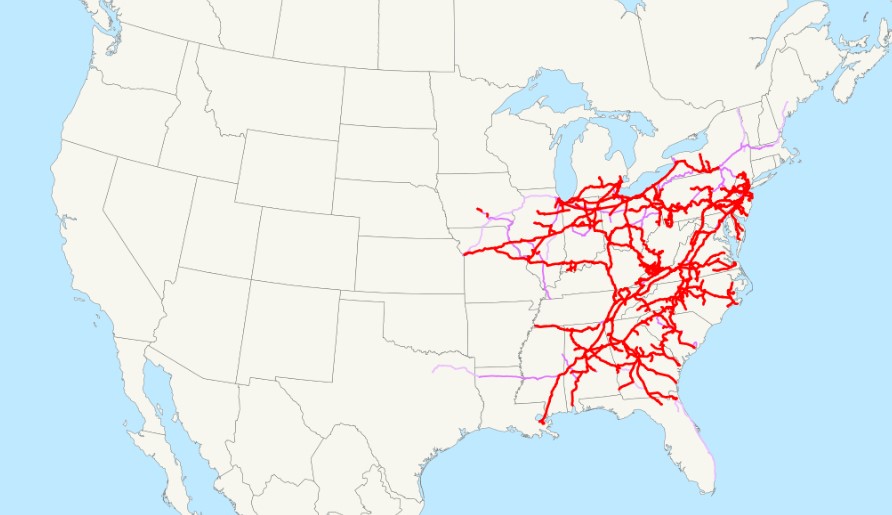
The railroad was formed in 1982 following the merger between Norfolk and Western Railway and Southern Railway.
Union Pacific
Behind only BNSF, Class I railroad Union Pacific is the second largest railroad in the U.S. by both revenue and network size. The railway operates 32,100 miles track, nearly equivalent to BNSF, and boasts coverage across the western U.S.
Just like CSX and Norfolk Southern in the eastern U.S., Union Pacific shares a duopoly on freight rail lines in the country’s Midwest, Southwest, and West Coast regions. As such, Union Pacific offers connections between bustling seaports and major inland ramps as far east as Chicago.
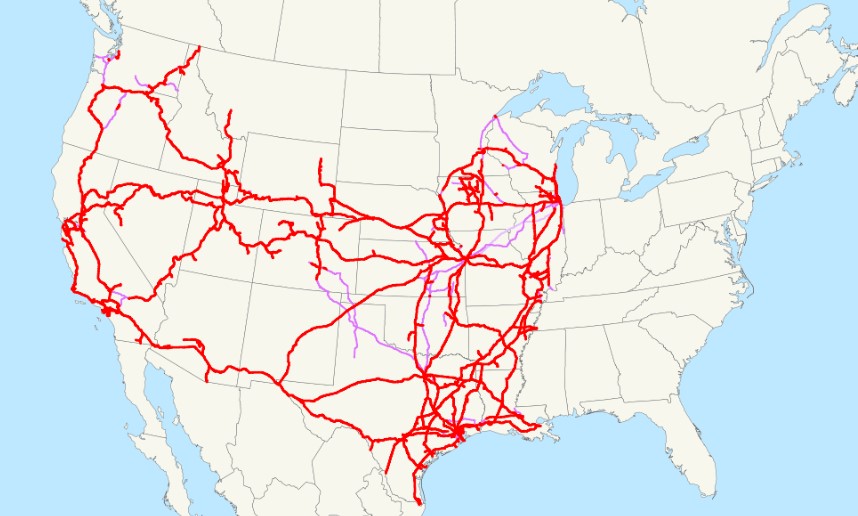
Union Pacific’s history dates back to 1862 as its conception was apart of the first transcontinental railroad project, a massive undertaking which ultimately connected rail networks in the eastern and central U.S. to western frontier states and the Pacific Coast. Through a series of mergers in the late 1990’s, Union Pacific acquired the network that it owns and operates to the present day.
Final Thoughts
The respective networks of Canada’s two Class I railroads Canadian National and Canadian Pacific Kansas City also branch into the U.S., with CPKC’s tracks even extending into Central Mexico. This makes CPKC the only railroad that spans North America under it owns network.
Amtrak, a majority-owned federal passenger line, is also considered as a Class I railroad.
Altogether the continent’s freight rail network is operated by seven Class I railroads, 22 regional railroads, and over 580 short line railroads.
Contact one of our team members if you have any questions regarding this topic or any others in domestic logistics.
More blogs similar to this:

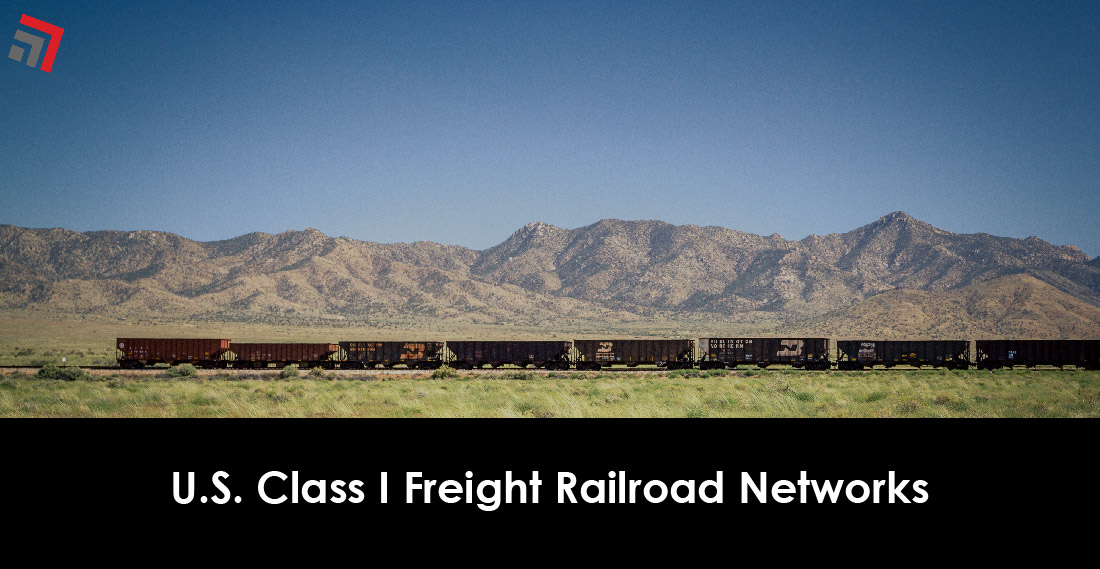

Recent Comments